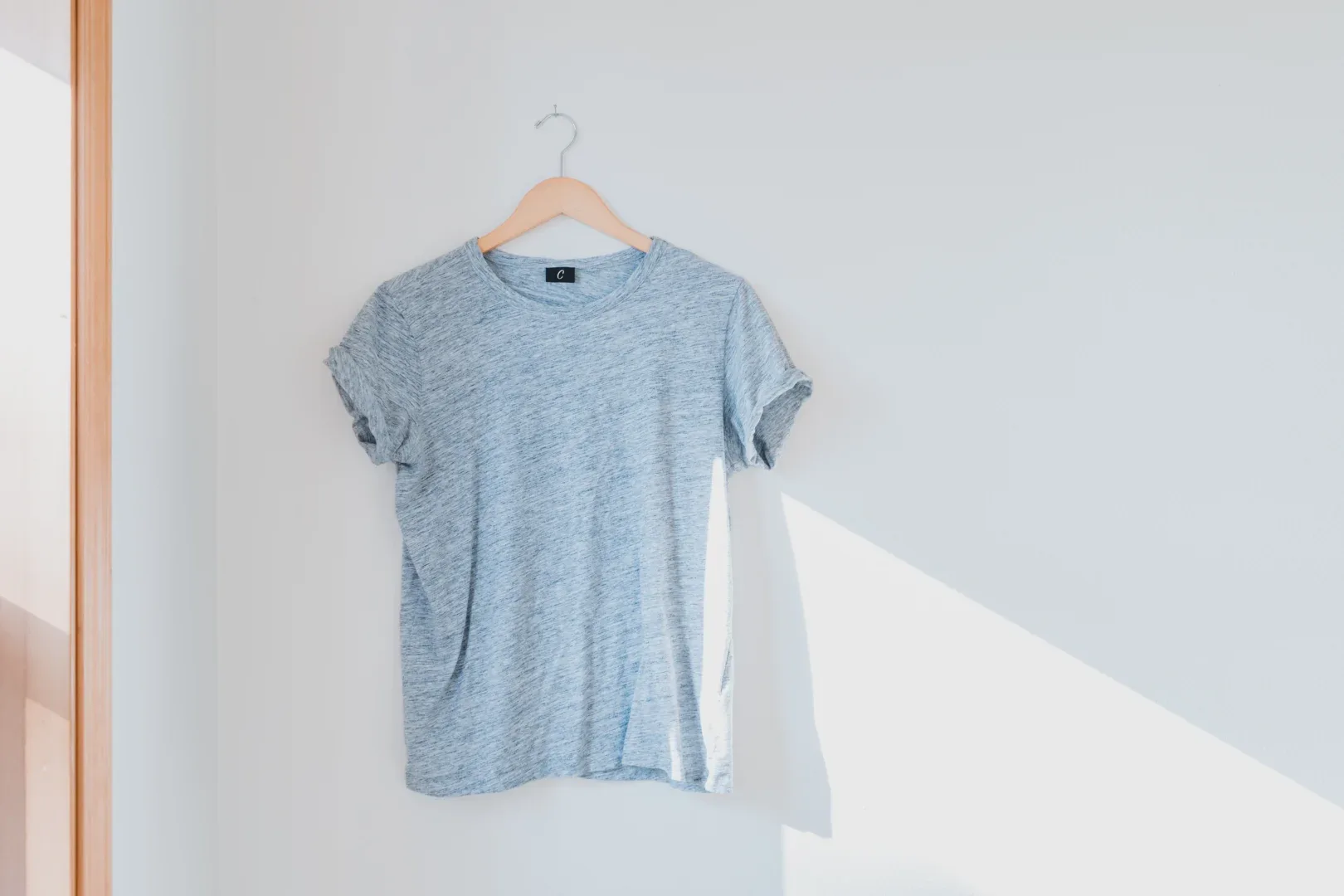So, you’ve found yourself with a load of woolen clothes that desperately need a wash, but you’re worried about damaging them in the process. Well, fret not, because in this article, we’re going to share some valuable tips and tricks on how you can safely wash your beloved woolen garments without causing any harm. Whether it’s a cozy wool sweater or a pair of delicate woolen socks, we’ve got you covered with practical advice that will have your woolens looking and feeling like new again. Say goodbye to your worries and hello to fresh, clean woolen clothes!

Understanding Woolen Fabric
Woolen fabric is a popular choice for winter clothing due to its excellent insulation properties and soft texture. It is made from the fleece of sheep, and sometimes from other animals such as goats or llamas. Woolen fabric has distinctive characteristics that set it apart from other fabrics.
Characteristics of woolen fabric
Woolen fabric is known for its warmth, breathability, and moisture-wicking abilities. It has a natural elasticity that allows it to stretch and recover without losing its shape. Woolen clothing is also resistant to wrinkles and creases, making it ideal for travel. Additionally, wool has natural odor-resistant properties, which means that it doesn’t require frequent washing.
Why wool requires special care
While woolen fabric offers many advantages, it also requires special care to maintain its quality and longevity. Because wool fibers can shrink and become misshapen when exposed to heat, it is important to avoid high temperatures during both washing and drying. Furthermore, wool is prone to felting, which is the matting and tangling of its fibers. This can occur when wool is agitated or exposed to friction, so gentle handling is key to preventing damage to woolen clothing.
Preparation Before Washing
Before diving into the washing process, it is crucial to properly prepare your woolen clothes to ensure the best results and avoid any mishaps.
Reading the label instructions
Each woolen garment comes with a care label that provides specific instructions for washing and maintenance. It is essential to read and follow these instructions carefully to prevent any damage to your clothes. The label will indicate whether the item can be machine-washed or if it requires hand-washing. It may also advise on the appropriate water temperature and other considerations.
Sorting woolen clothes
When preparing to wash woolen clothes, it is advisable to sort them according to color and weight. Bright or dark-colored garments should be washed separately to avoid color bleeding. Additionally, heavy items should be washed separately from lighter ones to prevent damage caused by differing washing and spinning speeds.
Pre-treating stains
Before washing, take the time to pre-treat any stains on your woolen clothes. Use a mild stain remover or a gentle detergent and apply it directly to the stained area. Allow it to sit for a few minutes before proceeding with the washing process. This simple step can help ensure that your woolen clothes come out of the wash looking fresh and stain-free.
Avoiding common mistakes
To avoid common mistakes when washing woolen clothes, make sure to keep a few key points in mind. Firstly, never use bleach or harsh chemicals on wool, as they can cause irreversible damage. Additionally, avoid excessive agitation or rough handling, as this can lead to felting or stretching of the fibers. Lastly, always check the water temperature and select the appropriate washing cycle to prevent shrinkage or damage.
Choosing the Right Detergents
Selecting the right detergents is crucial to effectively and safely wash your woolen clothes.
Why regular detergents might not work
Regular detergents, particularly those designed for heavy-duty cleaning, can be too harsh for woolen fabric. They often contain enzymes and chemicals that can strip the natural oils from the wool fibers, causing them to become dry and brittle. Therefore, it is important to opt for detergents specifically formulated for delicate fabrics like wool.
Choosing a wool-friendly detergent
When choosing a detergent for woolen clothes, look for one that is labeled as “wool-friendly” or “delicate.” These detergents are typically pH-neutral and contain mild cleaning agents that are gentle on wool fibers. Look for products that are free from bleach, enzymes, and harsh chemicals. It is also a good idea to opt for detergents that are specially designed for machine or hand-washing, depending on your chosen method.
Using fabric conditioners
Fabric conditioners can help maintain the softness and elasticity of woolen fabrics. They work by depositing a thin layer of lubricant onto the fibers, preventing them from becoming stiff or rough. When using a fabric conditioner, follow the instructions on the label and add it to the final rinse cycle. This will ensure that the conditioner is evenly distributed throughout the garment, leaving it feeling luxurious and soft.
Hand-Washing Woolen Clothes
Hand-washing is often the preferred method for cleaning woolen clothes, as it allows for more control over the washing process and minimizes the risk of damage.
Preparing a washing solution
To hand-wash your woolen clothes, start by filling a clean basin or sink with lukewarm water. Avoid using hot or cold water, as extreme temperatures can cause shrinkage. Add a small amount of wool-friendly detergent to the water and gently swirl it around to create a mild soapy solution.
The proper technique for washing
When washing by hand, it is important to be gentle and avoid excessive agitation. Submerge the woolen garment into the soapy water and gently swish it around. Pay attention to any areas with stains or soiled spots, using your fingertips to work the detergent into the fabric. Avoid rubbing or scrubbing vigorously, as this can cause damage.
Things to avoid
When hand-washing woolen clothes, there are a few things to avoid in order to prevent damage. Firstly, never soak the garment for extended periods, as this can cause the fibers to become weak and lose their shape. Additionally, avoid wringing or twisting the garment to remove excess water, as this can lead to stretching and misshaping. Lastly, always use clean water for rinsing and avoid the use of fabric softeners, as they can leave residue on the wool fibers.

Machine-Washing Woolen Clothes
If the care label allows for machine-washing, it is important to follow the proper steps to protect your woolen clothes.
Setting the right washing cycle
When machine-washing woolen clothes, it is crucial to select a gentle or delicate cycle. These cycles typically have slower agitation and shorter spin durations, minimizing the risk of felting or stretching. Avoid using a regular or heavy-duty cycle, as the increased agitation can cause damage to the wool fibers.
Avoiding high temperatures
Temperature control is key when machine-washing woolen clothes. It is recommended to use cold or lukewarm water, as hot water can cause shrinkage and distortion of the garment. Additionally, avoid using the higher temperature settings for the wash and rinse cycles, as this can also lead to unwanted shrinking.
Limiting the amount of clothes
To ensure proper cleaning and care, avoid overcrowding the washing machine with too many woolen garments. Overloading can lead to inadequate water circulation and insufficient detergent distribution, resulting in uneven cleaning. Give your woolen clothes enough space to freely move within the drum, allowing for a thorough and gentle wash.
Rinsing and Removing Water
Thorough rinsing and proper water removal are essential steps in the woolen clothes washing process.
How to rinse properly
After washing, rinse woolen clothes in lukewarm water to remove any trace of detergent. Gently agitate the garment in the water, ensuring that all soap residue is thoroughly rinsed out. Make sure to use clean water and avoid leaving any detergent on the fabric, as this can cause discoloration or damage.
Pressing out water vs wringing
When removing excess water from woolen clothes, it is important to avoid wringing or twisting the garment. This can cause stretching, distortion, and misshaping of the fibers. Instead, gently press the garment against the side of the basin or sink to squeeze out the water. Be careful not to apply too much force, especially for delicate or loosely woven woolen fabrics.
Absorbent towel technique
To further aid in removing excess water from woolen clothes, you can use the absorbent towel technique. Lay a clean, dry towel flat on a surface and place the washed garment on top. Roll the towel and garment together, applying gentle pressure to extract the remaining moisture. This method helps to speed up the drying process while avoiding any potentially damaging actions.

Drying Woolen Clothes
Proper drying techniques are key to maintaining the shape and quality of woolen clothes.
Avoiding exposure to direct heat
When drying woolen clothes, it is crucial to avoid exposure to direct heat sources such as radiators, heaters, or sunlight. High temperatures can cause the fibers to shrink, distort, or become damaged. Instead, choose a well-ventilated area with good airflow to allow for gentle and even drying.
Flat drying recommendation
Flat drying is the preferred method for drying woolen clothes as it helps maintain their shape. Lay a clean, dry towel or a mesh drying rack on a flat surface. Gently reshape the woolen garment to its original size and lay it flat on the towel or rack. Avoid hanging woolen clothes to dry, as this can lead to stretching and misshaping.
Reshaping the garment
During the drying process, woolen clothes may lose their shape or become slightly misshapen. To prevent this, take the time to reshape the garment while it is still damp. Gently stretch and smooth out any distorted areas to restore the original shape. Pay particular attention to sleeves, collars, and hems, as these areas are prone to losing their form during washing.
Woolen Clothes Storage
Proper storage of woolen clothes is essential to protect them from damage, pests, and moisture.
Avoiding hangers for woolen clothes
When storing woolen clothes, it is best to avoid hangers, as they can stretch out the fabric. Instead, fold the garments neatly and place them in a drawer or on a shelf. If hanging is necessary, use padded hangers or consider folding over the hanger to cushion the fabric.
Storing in a cool, dry place
Woolen clothes should be stored in a cool, dry place to prevent the growth of mold, mildew, or musty odors. Avoid storing woolen garments in places prone to humidity, such as basements or attics. Instead, choose a well-ventilated area away from direct sunlight and heat sources.
Using mothballs and cedar-scented products
To protect woolen clothes from moth damage, it is common to use mothballs or cedar-scented products. Mothballs contain chemicals that repel moths and other insects, while cedar-scented products emit a natural aroma that pests find unpleasant. Make sure to follow the instructions on the product packaging and avoid direct contact between these products and your woolen clothes.
Maintaining the quality of Woolen Clothes
Regular maintenance is key to preserving the quality and longevity of woolen clothes.
Importance of proper maintenance
Proper maintenance is crucial for keeping woolen clothes in excellent condition. Regular care helps retain the softness, color, and shape of the fabric. By following the recommended washing and drying methods, as well as implementing careful storage practices, you can extend the lifespan of your woolen garments and enjoy them for years to come.
Regular airing of woolen clothes
To help keep your woolen clothes fresh and prevent any lingering odors, it is recommended to regularly air them out. After wearing, hang the garment in a well-ventilated area for a few hours. Fresh air circulation helps remove any moisture, allowing the fibers to breathe and rejuvenate.
Brushing to remove surface dirt
Over time, woolen clothes may accumulate surface dirt or lint. To remove these particles and restore the fabric’s appearance, use a soft-bristled clothing brush or a lint roller. Gently brush or roll in one direction, following the grain of the fabric, to avoid causing damage or pilling.
Alternative Cleaning Methods
In certain situations, alternative cleaning methods may be necessary to maintain the cleanliness of woolen clothes.
When to consider dry-cleaning
While hand-washing or machine-washing is typically sufficient for most woolen clothes, certain delicate or heavily soiled items may require professional dry-cleaning. Dry-cleaning utilizes special solvents and techniques that effectively clean and refresh woolen garments without causing damage. Consider dry-cleaning for items such as tailored wool suits, heavily embellished pieces, or those labeled as “dry clean only”.
Steam cleaning of woolen clothes
Another alternative to traditional washing is steam cleaning. Steam cleaning can effectively remove odor, refresh the fabric, and kill any bacteria without using water. It is a suitable method for garments that are not heavily soiled but require a quick freshening up. Always follow the manufacturer’s instructions and test the steam cleaner on a small, inconspicuous area of the woolen garment before proceeding.
Using wool-friendly fabric refreshers
To keep your woolen clothes smelling fresh between washes, consider using wool-friendly fabric refreshers. These products contain gentle formulas that eliminate odors and leave a pleasant scent on the fabric. Follow the instructions on the product packaging and ensure that the fabric refresher is suitable for use on wool.
By understanding the characteristics of woolen fabric and following the proper washing, drying, and storage techniques, you can maintain the quality and longevity of your woolen clothes. Remember to be gentle, avoid excessive agitation or high temperatures, and select wool-friendly detergents and cleaning methods. With proper care, your woolen garments will continue to provide warmth, comfort, and style for years to come.